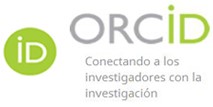The redistribution of the capital accumulation process in Ecuador between the years 2006 and 2016
DOI:
https://doi.org/10.62452/fmm2dh61Keywords:
Performance, sales, profits, investment, purchases, employment, production, consumption, surplus valueAbstract
The study analyzes the importance of the role of the State in the economy and in the process of accumulation of wealth. The economic model implemented by the Government of Rafael Correa, managed to displace private enterprise, thereby generating an increase in dependence on the economy by the State; the organic composition of capital was redistributed, limiting the expanded reproduction of capital (by the interference of the state in the process of accumulation of wealth), thus counteracting the dynamics of the economy on the part of the capitalist enterprise. The gravitante of this situation is that in spite of the enormous economic resources, the external debt has grown, the problem of employment has not been solved and the only tool used to level the government's finances, has been a policy administration prosecutors aggressively and persecuting.
Downloads
References
Academia de Ciencias de la U.R.S.S. Instituto de Economía. (1956). Manual de Economía Política. México: Grijalvo.
Acosta, A., & Cajas Guijarro, J. (2018). Una década desperdiciada. Las sombras del correismo. Quito: Caap.
Auad, I., et al. (2014). 500 mayores empresas del Ecuador. Vistazo, 1130, 91 - 118. Recuperado de https://www.vistazo.com/seccion/edicion-impresa/500-mayores-empresas-del-ecuador
Ecuador. Banco Central. (2016). Informes estadísticos mensules 2006 - 2016. Quito: BCE.
Ecuador. Secretaría Nacional de Planificación y Desarrollo. (2009). Plan Nacional para el Buen Vivir 2009 - 2013. Quito: SENPLADES.
Ecuador. Secretaría Nacional de Planificación y Desarrollo. (20013). Plan Nacional para el Buen Vivir 2013 - 2017. Quito: SENPLADES.
Downloads
Published
Issue
Section
License
Copyright (c) 2019 Oswaldo Miño, Carlos Valencia, Eduardo Sotomayor (Autor/a)

This work is licensed under a Creative Commons Attribution-NonCommercial 4.0 International License.
The authors retain the copyright, granting the Journal the right to first publication of the work. The authors assign the Journal the rights to exploit the work, authorizing its distribution and public communication for non-commercial purposes. The authors retain the moral rights to the published work. The economic rights belong to the Journal.


